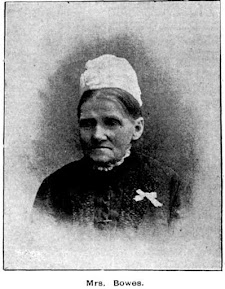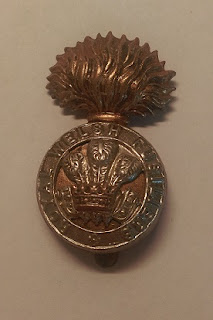A dark time in Sydney
People from all walks of life are buried or were cremated at Rookwood. I am afraid amongst the good souls there are those who chose a different path in life.
Today's blog is about one
"hard" man of an earlier dark time in Sydney.
NORMAN BRUHN
Norman Leslie Bruhn was born
in June 1894 in Geelong, Victoria, the middle child of ten of Oscar Johann
Bruhn and Mary Anne nee McFarlane. Oscar was a baker and it would appear the
household was a volatile one made worse by his heavy drinking and short temper.
Oscar was born in the Goldfields area of Victoria where his family had
relocated no doubt seeking their fortune like so many from the mid 1850's.
Norman was not a keen
student and aged 14 went to work in a local woollen mill, where his lower arm
was drawn into a loom and fractured. A few years later he started his criminal
career starting with a charge of offensive behaviour in July 1914 whilst harassing
people, leading a group of youths. In September that year he was charged with
the same offence for fighting with young men after the Bendigo railway picnic
causing injury after an argument about the war.
Being attracted to guns and having a keen interest in how to handle them, he enlisted in the AIF. Norman missed the landing at Gallipoli but served in the area. It wasn't long before he became ill with influenza and hospitalised in Lemnos. Once discharged he took part in the Battle of Lone Pine in August 1915. His service record shows frequent occurrences of drunkenness, absence without leave and desertion. He was court-martialed twice and treated for venereal disease several times. After the war ended in 1918, he was arrested and escaped from custody being absent for six months through to October 1919. Court-martialed a third time in London, he was detained in custody and shipped back to Melbourne arriving in February 1920 and discharged from the army, not receiving any service medals. His elder and younger brothers also joined up and had better records than Norman’s but still fell prey to communicable diseases in the least.
Norman Bruhn - prisoner photo 1921 - Wikipedia
Norman married a young
waitress, Irene, and briefly worked on the Melbourne docks until returning to a
life of crime in earnest.
In Melbourne, Norman
followed an increasingly violent and active criminal career, often with his
brothers, which spanned many types of charges. Some of these were stealing,
robbery, breaking and entering, loitering with intent, absconding on bail;
assaulting Police, obscene exposure and being a suspected person. In a number
of instances, convictions were secured, but on several occasions he was
acquitted or the prosecution against him was abandoned after witnesses changed
their testimony.
Besides his brothers and
other petty criminals, Norman’s wife, Irene, was often involved.
By late 1926 Norman had
established a reputation in the Melbourne criminal underworld as an armed robber
and standover man and was known as a skilled “necklace (garotte) man”. He was urged by his Melbourne rival, Squizzy
Taylor, to relocate to Sydney to take control of crime in the area around Kings
Cross and Darlinghurst. After a charge of shooting and wounding was laid
against him in September that year, Norman breached his bail conditions and
fled to Sydney with Irene and his young sons. A warrant for his arrest was
issued but the wounded man in Melbourne stated he did not want to proceed with
a prosecution and the charges were withdrawn.
During the 1920’s inner Sydney suburbs were in decline and vice was
rampant. Laws were passed to implement constraints on gambling, prostitution
and the sale of alcohol and narcotics. It was a time rife for the organised
crime syndicates to emerge.
When Norman began working on the Sydney docks, he quickly established
connections with those that smuggled or stole cocaine; a whole new world for
exploitation. In early 1927 a law was brought in that required a person to hold a
licence to carry or possess a pistol with large fines and prison sentences if
flouting the law. As such the weapon of choice became the straight or “cutthroat” razor with a sharp blade that could be folded back into its handle and
easily hidden. It is believed that the group of criminals led by Norman in
Sydney were the first “razor” gang.
Example of a straight (cut-throat) razor - Wikipedia
He threatened, intimidated and disfigured any opponents such as cocaine
traffickers, thieves and prostitutes who were attacked in laneways, brothels or
in their homes. Norman and his gang members demanded money from their victims
and would not hesitate to slash them about the face or body if they were not
forthcoming. It was at this time Norman became the lover and pimp of the notorious
prostitute, Nellie Cameron, a privately educated girl who was attracted to the
criminal life. She became known as the “Angel of Death” as most of her boyfriends
or husbands were murdered. Nellie was kidnapped, beaten, stabbed, razor slashed
and shot on numerous occasions.
It all came to an end on the night of 22nd of June 1927, when Norman
and three others caught a taxi from his home in Francis Street where he lived
with Irene to a residence in Charlotte Lane in Darlinghurst, known to some to
be a sly-grog shop. Upon leaving, they were ambushed by two men in the Lane,
one of them drew a revolver and shot Norman multiple times at close range. A
nearby Constable performing beat duties heard the shots and came running to the
scene, to see Norman lying in a pool of blood but no one was able to tell him
what happened!
When Norman was admitted to hospital, he was suffering from shock as a
result of his wounds. Although fully conscious, he refused to give the
authorities any information stating that he did not know the name of his
assailant.
Norman Bruhn died at 5.50am in Sydney Hospital on the 23rd June
1927, he was 33 years of age. Norman was buried in the Anglican section of the
Cemetery near where the Rookwood General Cemetery office now stands on the 25th
June. It was estimated that 50 to 60 people were present at the graveside.
It was hoped that with Norman’s death the viciousness of the Sydney crime
scene would end. It didn’t. The Razor Gang wars continued unabated for some
years.
After his death Norman Bruhn’s criminal legacy continued among his descendants
for several generations.
Norman is buried alone in an unmarked grave with only long grass swaying
in the breeze, a quiet peaceful place in complete contrast to his life.
For today’s blog I have drawn information from ancestry.com.au; Wikipedia,
Obituaries Australia, “Khaki Crims and Desperadoes” by Russell Robinson as well
as various trove searches.
The 1920’s and 1930’s - a frightening time to live in the inner suburbs of
Sydney with the likes of Tilly Divine and Kate Leigh heading up prostitution and sly grog shops but that's for another tale.
If you have any insights to add or comments about this blog today, please
add them below or at the Group Facebook page found under a search of
Rookwood Cemetery Discoveries
Or simply send me a message at
Until next week






Comments
Post a Comment